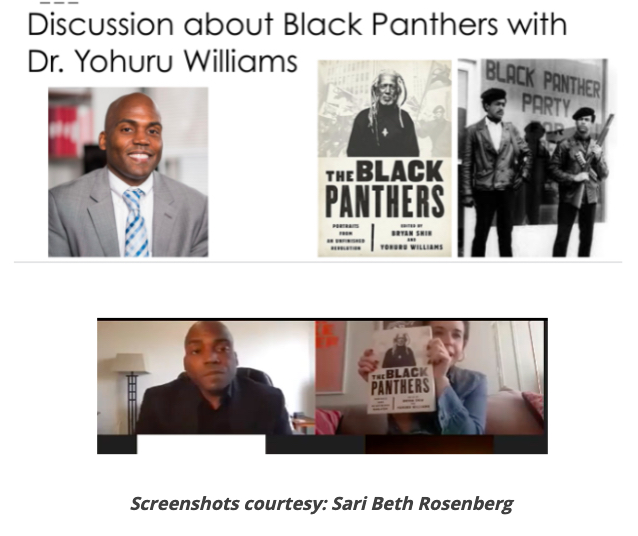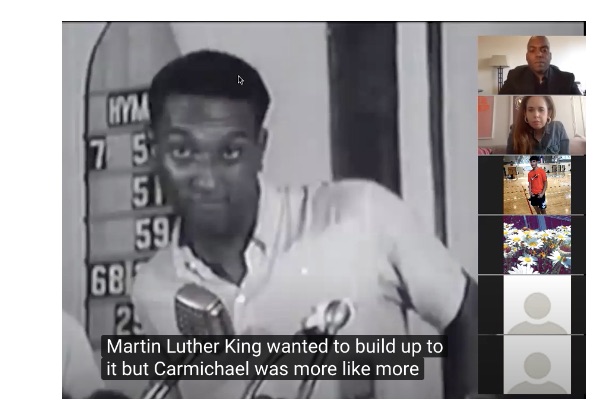By. Sari Beth Rosenberg
To create a sustainable future, we need to create equal opportunities for all. Education is an important tool in this mission. Goal Ten of the United Nations Sustainable Development Goals is “reducing inequalities.” Yet, the equity component of sustainability is often an afterthought when designing sustainability curriculum. As we embark on a new school year, we must make a more concerted effort to integrate social equity into our daily lessons.
During remote instruction last spring, I found my most engaging lessons were the ones that addressed racial inequities in society. We can all agree that the online learning model will never replace the connections that are forged in an actual classroom. However, the experience provided me with an opportunity to deconstruct my pedagogy, allowing me to discover new ways to forge community, better engage my students, and more explicitly connect my lessons to sustainability education. In that process, I learned my students were particularly interested in lessons that addressed equity and current events. As a result, I redesigned many of my lessons around themes related to anti-racism and social justice.
Here are some of my best practices related to equity-themed lessons from remote learning in the spring. Although I teach social studies, I hope these anecdotes will inspire teachers across all disciplines to reframe their respective curriculum with a stronger emphasis on equity.
Teaching About the Civil Rights Movement Even Though It Wasn’t on the Exam
I teach AP United States History and when schools across the nation went remote, the College Board made changes to the 2020 exam. For one, they announced that students would only be responsible for content from 1607 – 1945. Even though the content we were about to study (the Civil Rights Movement) wasn’t going to be on the new version of the AP exam, I decided it was still important for my students to learn about the Civil Rights Movement and provide them with a historical narrative of agency with young people at the center. Incidentally, I made this decision about a month before the police murder of George Floyd.

Emphasizing Youth Involvement in the Fight for Social Justice
I noticed that my students were feeling hopeless and helpless as they were forced to quarantine in their homes and apartments across New York City. As a result, I decided to create a lesson that emphasized the role that young people played in the Civil Rights Movement to empower my students. I explained to them that learning about the fight for equity in America was a form of activism in itself.
Keeping these goals in mind, I designed a lesson about what was considered the “the Last Great March in the South” where students would compare Dr. Martin Luther King Jr.’s rhetoric and strategy with Stokely Carmichael’s, the young leader of SNCC (Student Nonviolent Coordinating Committee). Then, we traced the rise of the Black Panther Party and practiced synthesis by discussing the Black Lives Matter Movement. In preparation, students read and analyzed some primary source material, including speeches from King and Carmichael. They also watched a clip from the “Eyes on the Prize” documentary series about the Black Panther Party. (Students can access this entire PBS series for free on the Facing History site.) To provide my students with a special treat, I invited Dr. Yohuru Williams, a noted scholar of the Civil Rights Movement and the Black Power Movement as well as Founding Director of the New Racial Justice Initiative at the University of St. Thomas in Minnesota, to my Zoom class. (You might recognize him from his History Channel Sound Smart videos or from Twitter.)
Note: I highly recommend reaching out to experts to visit your remote classes this fall. One of the few silver linings with remote school is that it’s easier to bring in special guests to educate and inspire your students. Contact local politicians, activists, and academics.
We started the class with Dr. Williams discussing the context of James Meredith’s 1966 March Against Fear. Dr. Williams and I emphasized the significance of the infusion of younger leadership in the Civil Rights Movement. Then we invited students to discuss the role of young people in politics and activism today, including how their voices have helped shape the political platform of the Democratic Party. Williams emphasized how this was similar to how Carmichael influenced the messaging and actions of the late 1960s Civil Rights Movement, including his efforts to encourage more Black people to register to vote.
Then, Dr. Williams discussed the Black Panther Movement and the impact of the Black Lives Matter Movement, forging connections between past and present as well as providing students with examples of the many ways to make a difference in their respective communities and politically engage. One important connection to make between the United Nations Sustainable Development Goals and the Black Panther Party was how local chapters organized what they called community “survival programs.” These groups focused on ways to support low-income communities and address social inequity. They provided a free daily breakfast program for 20,000 children and a free food program for other community members. These Black Panther local chapters also sponsored schools, legal aid offices, clothing distribution, local transportation, health clinics, and sickle-cell testing centers in several cities.
Addressing Current Events Related to Sustainability and Equity in Real Time
Public Health and Criminal Justice Reform
As we transitioned to remote learning, several students messaged me articles about the coronavirus epidemic’s effect on the most vulnerable people in the American population, including the undocumented and people imprisoned at Rikers Island. Without specifically articulating it as a sustainability issue, my students were seeing the connection between this growing public health crisis as it intersected with inequity in America. I was determined to find a way to connect my lessons to these issues.
My friend, Eliza Orlins, a public defender in New York City, jumped at the opportunity to talk to my students about the coronavirus and criminal justice issues. I set up an Instagram Live with her and made sure to record it for students unable to tune into the event. As students watched, I interviewed Orlins about her occupation as a public defender and the human rights and criminal justice issues connected to the spread of coronavirus in prisons, especially Rikers Island. Orlins helped students connect the current day issue of prisoners at Rikers being more vulnerable to coronavirus as an example of a modern day civil rights issue, as well as an example of one of the United Nations Sustainable Development Goals.

Students asked questions in the chat section of Instagram, and she was able to help students synthesize current issues and guide them in how to become more civically engaged. It was an educational and empowering experience for many students who had been feeling helpless. It also showed them an example of a career that they could pursue to help create a more equitable society.
Providing Historical Context to the George Floyd Protests
The week after Memorial Day weekend, my plan for the week was to offer support to students who were struggling to keep up with classwork and homework. I had no intention of assigning anything new. I toyed around with the idea of having an impromptu Instagram Live class if students were interested, but ultimately I was planning on giving them space for the week.
Then we all heard the news about the murder of George Floyd by four Minneapolis police officers.
As a history teacher, I was compelled to hold an impromptu class about George Floyd on Instagram Live. Dr. Williams blessed us with a second visit to help provide some historical context and give students the space to further process what they were watching in real time on the news.
Fueled by outrage over the brutal police killing of George Floyd, as well as a renewed call for police reform, people took to the streets in record numbers. There was suddenly an unavoidable national conversation about America’s ongoing problem with racism, especially how it plays out in our criminal justice system. Students had a lot of questions about social inequity as it relates to the criminal justice system, so I decided to screen the Ava DuVernay documentary “13th” for the rest of the week. The main point of the film is that mass incarceration is an extension of slavery. In other words, mass incarceration of primarily Black and Brown Americans is the new Jim Crow in America.
Throughout the week, I made sure to keep assignments related to the film open-ended. My main goal was to have students use the film as a way to process and contextualize the current inflection point occurring in America surrounding criminal justice reform. We also connected this topic to the United Nations Sustainable Development Goal of reducing inequality.
Looking Forward
As we approach the new school year here in New York City, I plan to redouble my efforts from last semester by integrating more lessons that address social inequity. I also plan to more explicitly connect these topics to the United Nations Sustainable Development Goals. For social studies and non-social studies teachers looking for ways to more seamlessly integrate equity into their lessons, I recommend following accounts such as SocialStudies4SocialJustice.
I am hopeful that the coronavirus pandemic has finally pushed the world to take more serious action to address the pandemic of institutionalized racism via meaningful legislation and policies. I am also hopeful the remote learning experience will change the way schools design curriculum, with a greater emphasis on sustainability education and the social-emotional health of the entire school community.
Author Bio
Sari Beth Rosenberg is a writer, teacher, public speaker, and Shelburne Farms Fellow. She has taught at the High School for Environmental Studies, a New York City public school, for the past 18 years. Sari was a member of the team that wrote the new social studies curriculum for the New York City Department of Education. She is a frequent curriculum consultant for the New York Historical Society. In March 2019, Sari was awarded the Paul Gagnon Prize by the National Council for History Education.
Twitter: @saribethrose
Instagram: @saribethrose




